What tools and ingredients you'll need to make pasta dough
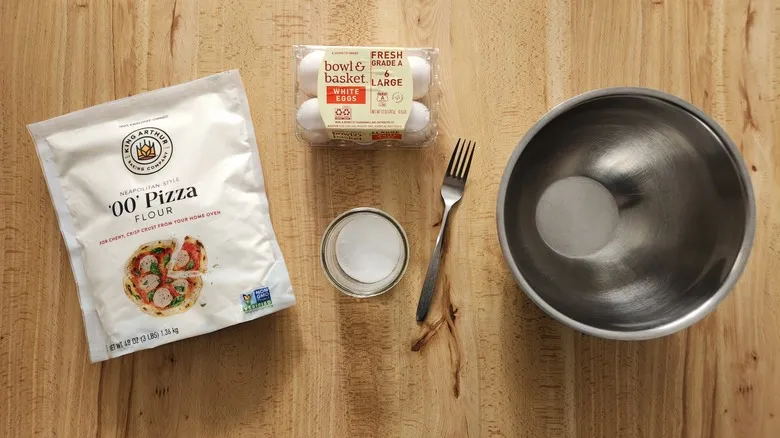
The equipment needed to prepare pasta dough is quite simple. All you require is a mixing bowl and a fork, along with a flat surface such as a table or countertop. If you plan to make pasta dough frequently, you might consider investing in additional tools. For instance, a wooden pasta board and a metal scraper can streamline the process and keep things tidy. Some chefs even use a humidifier in the kitchen to maintain the perfect moisture level for the pasta, but this is not essential for this method.
In terms of ingredients, you will need large eggs, salt, and 00 flour (pronounced "double zero"). This type of flour is regarded as the best choice for creating exceptional homemade pasta due to its fine texture, ease of stretching, and ability to yield a tender final product. Water is optional and should only be added if the dough appears too dry.
The classic Italian recipe recommends using 100 grams of 00 flour for every 55-57 grams of egg, which is approximately equivalent to one large egg in the U.S. For a serving size suitable for four people, use 300 grams of flour and 3 large eggs. We highly recommend weighing your flour and eggs in grams using a food scale for optimal results. If you don't have a scale, 300 grams of flour is about 10.5 ounces or roughly 2? cups, provided the flour is measured accurately in the measuring cup.
Step 1: Mix the flour and salt in a bowl

If you're preparing the four-person recipe outlined earlier, be sure to add a generous pinch of salt to the flour. Combine both ingredients in a mixing bowl and mix them well with a fork.
Using a bowl simplifies the initial steps and keeps things tidy, but the classic approach involves forming a mound of flour on the countertop with a well in the center to hold the eggs. This technique is often referred to as the volcano method for making homemade pasta dough. You can experiment with that later if you'd like, but for now, we'll continue using a bowl.
Step 2: Mix in the eggs with a fork
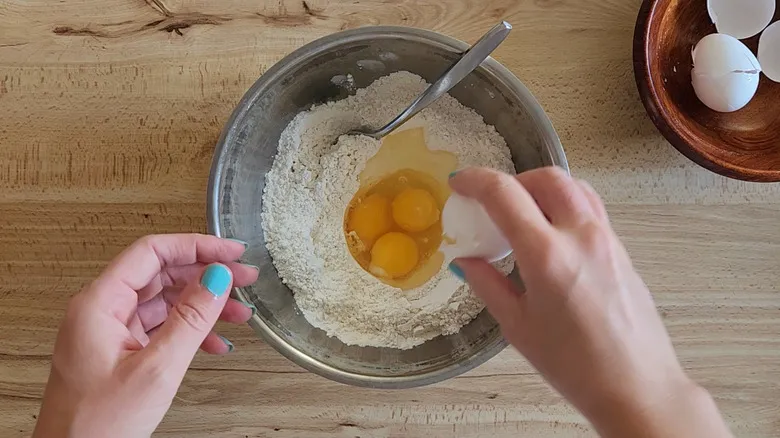
After forming a well in the center of your flour and salt blend, crack the eggs into the hollow. Gently whisk the eggs with a fork, then incorporate them into the flour. As you stir, the dough will slowly begin to come together and gain firmness.
When it becomes challenging to use the fork, switch to your hands for mixing. Begin to knead and press the dough lightly until it holds together in a rough ball.
Step 3: Knead the dough

Dust your work surface lightly with flour and place the dough on it. Begin kneading the dough using your hands. To do this, push the center of the dough forward with the heel of your hand, fold it in half, rotate it, and then push again. Continue kneading for about 10-15 minutes.
As you knead, monitor the moisture level of the dough. The aim is to achieve a consistency that allows for easy kneading without crumbling or sticking to your hands. If the dough starts to crumble, dampen your hands slightly with water and knead a bit more. If it becomes too sticky, sprinkle in a tablespoon of flour and keep kneading. If the dough remains too dry or too wet after a minute, repeat the adjustments, but be cautious with how much water or flour you add.
Cease kneading once the dough is smooth and elastic. You can check if it’s ready by pressing it with your fingertip; if it bounces back, it’s good to go.
Step 4: Let the dough rest
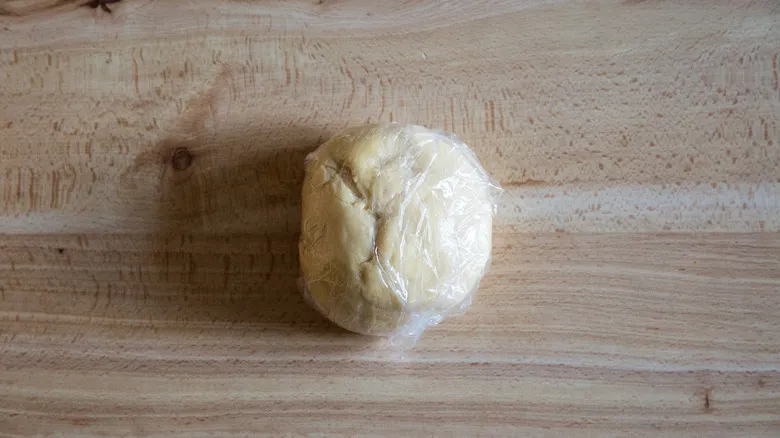
Once you've completed kneading the dough, wrap it in plastic wrap or cover it with a slightly damp towel, and allow it to rest on the counter for a minimum of 30 minutes. If you don't plan to use it within a few hours, store it in the refrigerator.
This step is essential when preparing homemade pasta dough. Allowing the dough to rest is crucial as it helps to enhance moisture content. Additionally, it relaxes the gluten bonds, preventing the dough from shrinking when you roll it out.
How long does fresh pasta dough last?
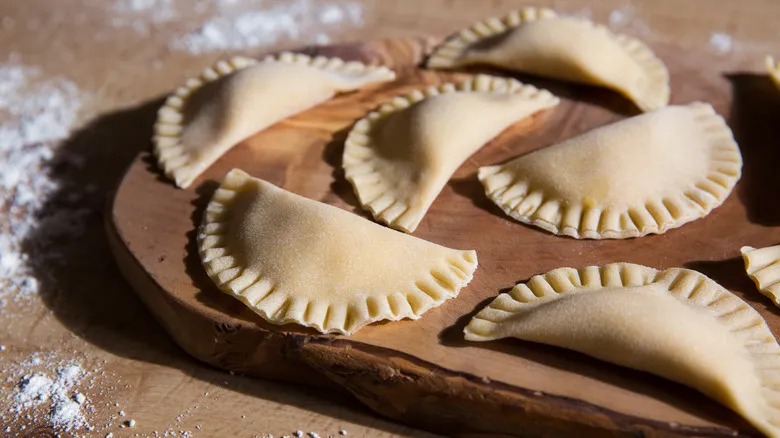
Depending on your schedule, you can begin shaping the dough after it has rested for at least 30 minutes. If you require a bit more time, the wrapped dough can remain on the counter for up to two hours before it needs to be refrigerated.
If you're planning ahead, you can prepare the dough 1-2 days in advance and store it in the refrigerator until you're ready to use it. Be sure to keep the dough wrapped during this time, as it can dry out quickly. You can use plastic wrap or cover it with a damp towel, placing it in a sealed container or under an inverted bowl. Just remember to let it come to room temperature before shaping — leaving it on the counter for about an hour should suffice.
Shaping and cooking with homemade pasta dough

This fundamental egg pasta dough can be utilized to create a diverse range of pasta shapes. For instance, a pasta machine can roll out long, thin strips of dough suitable for filled varieties such as ravioli, agnolotti, and tortellini. These sheets can then be sliced into strips using the same machine to produce tagliatelle or pappardelle. Shorter shapes like orecchiette and cavatelli don’t require a machine or rolling; simply roll pieces of dough back and forth under your palms until they form long, snake-like strands. Cut these into small segments and shape each piece by hand.
If you lack a pasta machine or prefer a hands-on approach, you can use a rolling pin to flatten the dough before cutting and shaping it. This method allows you to create any type of pasta that a machine can produce. It’s not necessarily more difficult, as the dough must be rolled through a machine multiple times to achieve the desired thinness. One of the key advantages of hand-rolling pasta dough is that it results in a rougher texture, which helps the noodles better absorb sauce.
When measuring your pasta portions, remember that you will need to account for double the weight of fresh pasta compared to dry pasta, due to the added moisture making it heavier. Additionally, cooking fresh pasta is generally quicker, taking only 2 to 5 minutes, except for baked dishes like lasagna.
Recommended
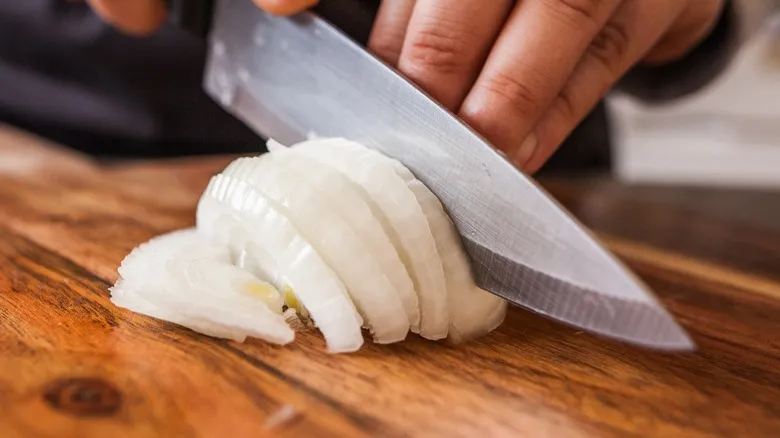
Here's How Many Onions You Need For One Cup: Sliced, Diced, Or Chopped
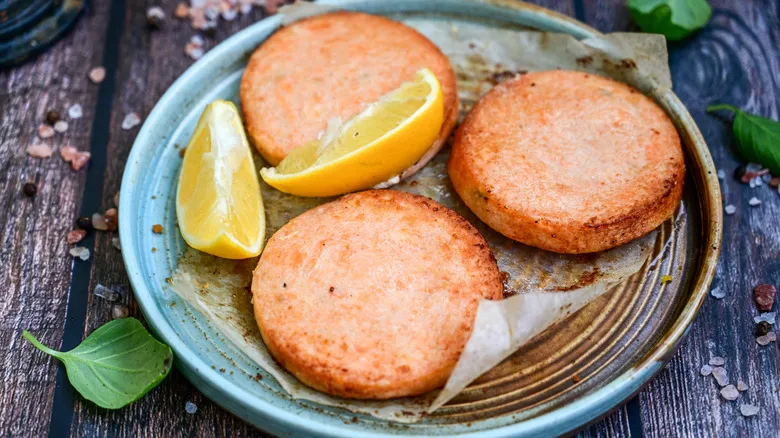
The Simple Seasonings You Need For Salmon Burgers
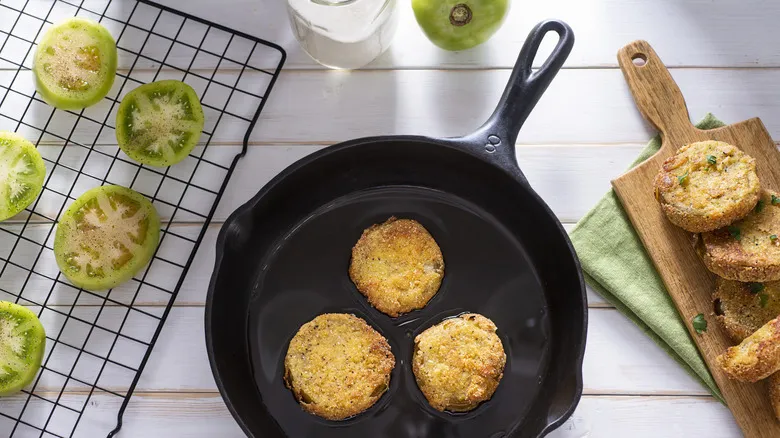
An Ingredient Swap For The Most Flavorful Fried Green Tomatoes Ever

The Easiest Way To Transform Trader Joe's Pancake Bread Into An Easy Breakfast
Next up

